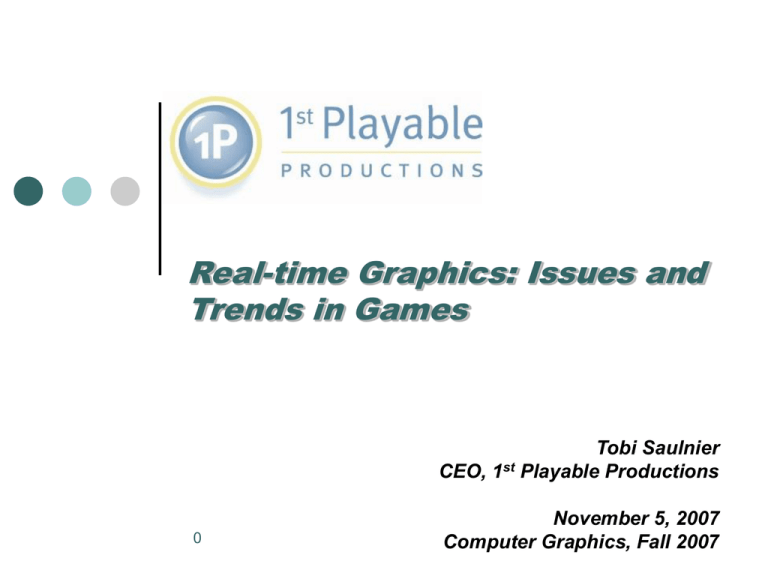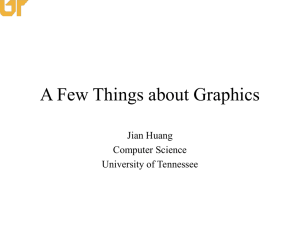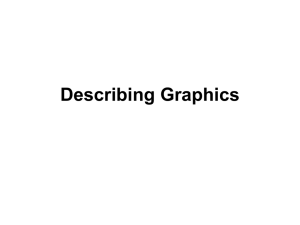Real-time Graphics: Issues and Trends in Games
advertisement

Real-time Graphics: Issues and Trends in Games Tobi Saulnier CEO, 1st Playable Productions 0 November 5, 2007 Computer Graphics, Fall 2007 Graphics in Games Notable for Real-time graphics Actually, a blend of prerendered and real-time rendered Migration of graphics techniques as technology advances (from film world) Each game platform has a unique architecture, optimization techniques need to be tailored for each Genre enforces priorities for processing Game art and design production creates bottlenecks Lifespan of a game platform <5 years 1 Console Platform Transitions … PSX (’94) N64 (’95) Dreamcast PS2 XBox Gamecube Xbox360, PS3, and Nintendo Revolution GBC (’98) GameBoy Advance N-Gage Dual Screen PlayStation Portable 1999 2000 2001 2002 2003 2004 2005 2006 2005 2007 2008 2009 2010 Video Games technology introduction is driven by intense industry competition. 2 Types of platform issues Every game platform has quirks and shortcomings, is only partially thought through, and decided well before most developers see the specs Embedded platforms – do more with fixed platform Optimize for specialized needs = differentiation General purpose platforms Phones, PC’s Graphics frameworks to isolate from low-level dependencies 3 Graphical Data Types 4 Scene data Character data Special Effects data Lighting Weather effects Particle systems Why Graphics Optimization? 5 More graphics in the game … More AI More realism More multiplayer More characters Nintendo DS 6 Arm 7 and Arm 9 processors Tony Hawk DS versus Spiderman DS Unreal III Engine (PC) 7 Trend in pipelines Fixed function pipelines Typical of GBA, DS, PSP, PS2 Programmable pipelines Pixel shaders Vertex shaders Shader languages Major transition for Xbox 360, PS3 8 Lighting Shadows Lighting Scene lighting Character lighting Resident evil – lighting tied into facial animation Doom – global illumination, shadow volumes 9 Doom XBox 10 Rendering 11 Tris, polys Multipass, single pass techniques Prerendering versus real-time rendering choices Architectural impact – GPU, memory, bus Unreal III Engine (PC) 12 Procedural graphics Problem = generation of enough content to utilize hardware capabilities Terrain generation Scene generation Spore – real-time generation 13 Manual generation is harder Trees Returning to the same scene – pseudorandom sequences Game challenges – design mapping Procedural Trees 14 Trends 15 Fixed function to programmable Deferred rendering Progression of 3D onto handheld Multiprocessing/multipurpose Networked play Procedural texturing, geometry Lighting / cinematics Takeaways 16 Now is an exciting time in graphics for videogames On all platforms! The problems being faced require a new level of engineering discipline, a transfer of knowledge from non-realtime to realtime You need to bridge hardware and software to be competitive Not just games – Impact of innovation in other important areas











